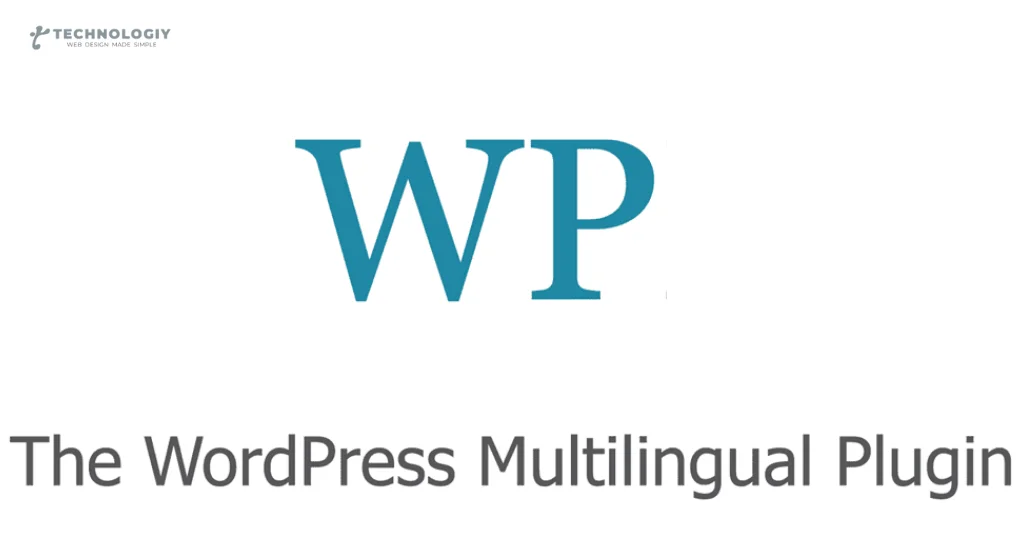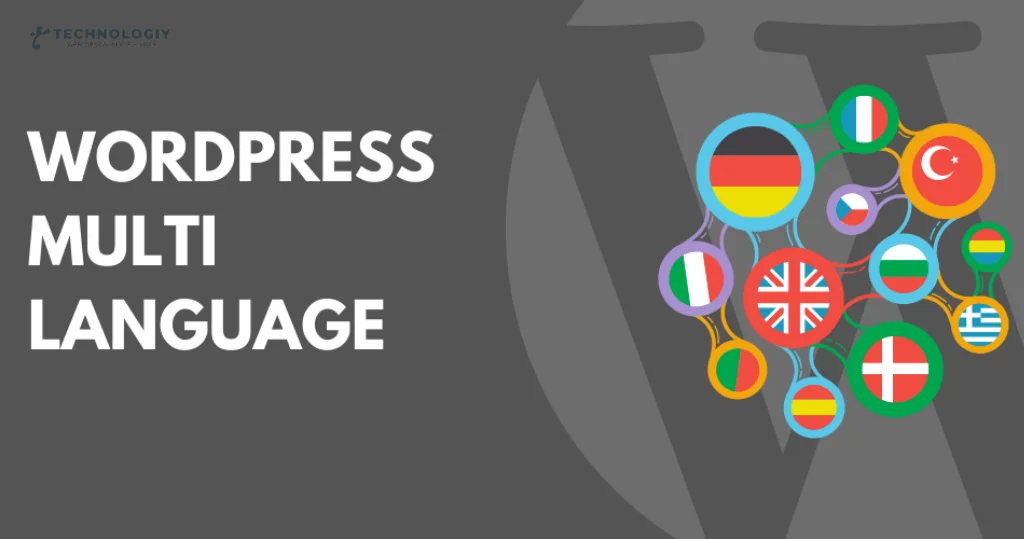The Benefits of WordPress Multilingual Integration for Content Marketing Strategies In today’s globalized world, businesses are expanding their reach beyond borders. This means that content marketing strategies must adapt to cater to a diverse audience. One effective way to do this is through WordPress Multilingual Integration. By implementing this feature into your WordPress website, you can easily translate and localize your content, enabling you to connect with a wider range of audiences.
So, what exactly are the benefits of WordPress Multilingual Integration for content marketing strategies? Let’s explore!
Reach a Global Audience:
By translating your content into different languages, you can engage with individuals from various countries and cultures.
Boost SEO:
Search engines like Google prioritize websites that offer multilingual content. By integrating WordPress Multilingual, you can optimize your website for different languages, improving your search engine rankings and driving more organic traffic.
Enhance User Experience:
Providing content in a user’s native language creates a personalized experience. Visitors are more likely to stay on your website, explore your offerings, and convert into customers if they can easily understand and connect with your content.
Increase Conversion Rates:
Studies have shown that people are more likely to make a purchase when information is presented in their native language. By offering multilingual content through WordPress integration, you can effectively communicate your value proposition and drive higher conversion rates.
Establish Trust and Credibility:
When businesses invest in translating their content, they demonstrate a commitment to understanding and serving their international audience. By showing that you value their language and culture, you build trust and establish credibility, making it more likely for customers to choose your brand over competitors.
Expand Brand Awareness:
With WordPress Multilingual Integration, you can effortlessly adapt your content to different markets. This helps raise brand awareness in new regions, allowing you to connect with potential customers who may have otherwise been overlooked.

Simplify Content Management:
WordPress Multilingual Integration streamlines the process of managing multilingual content. You can easily translate and update your website without the need for complex coding or third-party plugins. This saves time and resources, enabling you to focus on creating engaging content.
Stay Ahead of Competition:
While not all businesses have embraced multilingual content, those that do gain a competitive edge. By incorporating WordPress Multilingual Integration into your content marketing strategy, you demonstrate innovation and adaptability, setting yourself apart from competitors who have yet to tap into global markets.
WordPress Multilingual Integration offers numerous:
Benefits for content marketing strategies. From reaching a global audience to boosting SEO and enhancing user experience, this feature is an essential tool for businesses looking to grow and succeed in today’s interconnected world. So why wait? Start integrating WordPress Multilingual today and unlock the power of global content marketing!
The Ultimate Guide to WordPress Multilingual Integration for International Bloggers:
Are you an international blogger looking to reach a wider audience? Do you want to make your WordPress website more accessible to people from different parts of the world? Look no further! In this comprehensive guide, we will walk you through the process of WordPress multilingual integration, helping you take your blog to new heights.
Why WordPress Multilingual Integration Matters?
In today’s globalized world, having a multilingual website is crucial for reaching a diverse audience. By offering your content in multiple languages, you can connect with readers from different countries, cultures, and backgrounds. This not only expands your reach but also enhances the user experience, making your website more inclusive and user-friendly.
Getting Started with WordPress Multilingual Integration:
To get started with WordPress multilingual integration, you will need to install a multilingual plugin. There are several options available, but one of the most popular ones is WPML (WordPress Multilingual Plugin). WPML allows you to easily translate your content, manage multiple languages, and even create language switchers for your visitors.
Setting Up Multilingual Content:
Once you have installed and activated the multilingual plugin, it’s time to start translating your content. WPML provides a user-friendly interface that allows you to translate your posts, pages, categories, and even custom post types. You can either manually translate your content or use professional translation services to ensure accuracy and quality.
Managing Language Switchers:
Language switchers are essential for allowing your visitors to switch between different languages on your website. WPML enables you to create language switchers using a variety of options, such as flags, dropdown menus, or simple text links. Placing these switchers in a prominent location ensures that your visitors can easily navigate between languages.
Optimizing for SEO:
When it comes to multilingual websites, SEO plays a vital role in driving organic traffic. To optimize your website for search engines, it’s important to use language-specific URLs, meta tags, and keywords. WPML offers built-in SEO compatibility, allowing you to easily optimize your multilingual content for better search engine rankings.
Handling Language-Specific Media:
In addition to translating your written content, you may also need to consider language-specific media. This includes images, videos, and audio files that may need to be translated or localized. WPML simplifies this process by allowing you to manage language-specific media files, ensuring seamless integration with your multilingual website.
Testing and Monitoring:
Once you have set up your multilingual website, it’s crucial to test and monitor its performance. Make sure to thoroughly check all translated content for accuracy and readability. Additionally, monitor your website’s analytics to track engagement and user behavior across different languages. This will help you make data-driven decisions and continuously improve your multilingual integration.
WordPress multilingual integration opens up a world of opportunities for international bloggers:
By making your website accessible to a global audience, you can grow your readership, increase engagement, and establish yourself as a trusted voice in your niche. By following the steps outlined in this guide, you’ll be well on your way to creating a truly inclusive and successful multilingual blog.
So, what are you waiting for? Start integrating WordPress multilingual features into your website today and unlock your blog’s true potential!
Top Plugins for WordPress Multilingual Integration:
In today’s interconnected world, reaching a wider audience is paramount for the success of your blog. One effective way to accomplish this is by implementing WordPress multilingual integration. By providing language options on your blog, you can connect with a diverse range of readers and cultivate a global community. In this blog post, we’ll explore the top plugins that will transform your WordPress website into a multilingual powerhouse. So, let’s dive in!
WPML (WordPress Multilingual):
First up on our list is the highly popular WPML plugin, a trusted name in the WordPress multilingual integration domain. WPML allows you to easily translate and manage your content in multiple languages, providing a seamless experience for your visitors. With its intuitive interface and extensive language support, this plugin is perfect for bloggers looking to expand their reach and engage with a diverse audience.
Polylang:
If you’re seeking a powerful yet user-friendly multilingual plugin, look no further than Polylang. With Polylang, you can effortlessly create and manage multilingual content, customizing it to suit your specific needs. This plugin offers a range of features, including language-switching widgets, customizable URLs, and translation support for categories, tags, and more. Polylang empowers you to fully control the multilingual aspect of your blog without any hassle.
Weglot Translate:
For those seeking a quick and efficient solution, Weglot Translate is an excellent choice. This plugin automatically translates your website into multiple languages, saving you time and effort. With its intuitive dashboard, you can easily review and edit translations to ensure accuracy. Weglot Translate seamlessly integrates with your WordPress website, providing a smooth experience for both you and your readers.
TranslatePress:
Next on our list is TranslatePress, a versatile and user-friendly multilingual plugin. With TranslatePress, you can translate your website directly from the front end, making it incredibly convenient and efficient. This plugin also offers a visual editor, allowing you to preview translations in real time. Whether you’re a beginner or an experienced blogger, TranslatePress makes WordPress multilingual integration a breeze.
GTranslate:
Last but not least, we have GTranslate, a popular choice for bloggers seeking a straightforward multilingual solution. GTranslate utilizes Google Translate services to automatically translate your website into multiple languages. This plugin provides a language switcher widget, allowing your readers to easily switch between languages. GTranslate offers both free and premium versions, catering to bloggers with varying needs and budgets.
Incorporating WordPress multilingual integration into your blog is a powerful way to expand your reach and create a more inclusive online community. By leveraging these top plugins, such as WPML, Polylang, Weglot Translate, TranslatePress, and GTranslate, you can effortlessly enhance your blog’s language options and provide a seamless multilingual experience for your readers. So, why wait? Start exploring these plugins today and unlock the full potential of your WordPress website!
